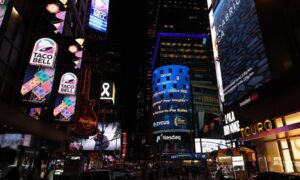Recently, the Supreme People’s Court of China issued the final judgment (2025) Supreme Court Intellectual Property Civil Final No.483 in the case of Guangdong Leishi Optoelectronic Technology Co., Ltd. (hereinafter referred to as “Leishi Optoelectronic”) v. Zhuosheng Lighting Co., Ltd. (Osram China’s regional professional lighting business operator) regarding the infringement of invention patent rights. The judgment clearly determined that the outdoor lighting strip products produced and sold by Zhuosheng Lighting fell within the patent protection scope of Leishi Optoelectronic, constituting patent infringement, and ordered it to immediately cease the infringing acts and compensate for economic losses. This intellectual property rights protection battle, which lasted nearly two years, finally concluded with the original creator’s victory. It not only demonstrated China’s judicial system’s strong protection of core technological achievements but also sent a clear signal to the market: even international brands will bear legal responsibility for crossing the intellectual property red line.
The infringement of multinational enterprises is established, and the judiciary supports the original
As a globally renowned brand in the lighting industry, Osram completed the integration of China’s professional lighting business through Zhuosheng Lighting and fully entered the outdoor lighting strip market in 2023. According to the rights protection team of Raylight Optoelectronics, Zhuosheng Lighting, leveraging the brand endorsement of Osram, adopted a low-price strategy to rapidly capture the market. Its core products share highly overlapping technical solutions with Raylight Optoelectronics’ patented outdoor lighting strips, directly constituting cutthroat competition.
During the trial proceedings, the first-instance court had already established the infringement facts. Leishi Lighting filed an appeal, arguing that “the disputed products are substantially identical to Leishi Company’s patented invention.” The Intellectual Property Tribunal of the Supreme People’s Court found that Leishi Optoelectronics ‘patented design resolved an industry-wide challenge regarding waterproofing and light efficiency consistency in outdoor light strips through its unique structural innovation. The core technical features of Zhuosheng Lighting’s products fully aligned with the patent claims, falling within the scope of protection. The court specifically noted in its judgment that as the enterprise acquiring Osram’s professional lighting technology assets, Zhuosheng Lighting possessed comprehensive intellectual property review capabilities. The court acknowledged its manufacturing and sales of the alleged infringing products, ordering it to cease infringement and compensate Leishi Company for economic losses.
“The landmark ruling establishes clear boundaries for intellectual property rights in professional lighting,” noted a lawyer specializing in IP litigation. The Supreme Court’s final judgment not only validates Raytronics Optoelectronics’ original innovations but also demonstrates China’s equitable regulation of multinational corporations’ IP practices, dispelling the industry misconception that ‘international brands face difficulties in intellectual property infringement accountability.’
Original technology builds benchmark, patent achievements get market verification
Leishi Optoelectronics’ legal victory was no fluke, but the culmination of seven years of relentless technological innovation. Since 2017, the company has focused on addressing pain points in outdoor lighting solutions. By assembling a dedicated R&D team to tackle challenges in LED strip technology, they ultimately developed a groundbreaking outdoor lighting application strip that combines high waterproofing, low power consumption, and easy installation. The related technology was granted a national invention patent in 2020.
Through technological breakthroughs, Leishi Optoelectronics’ products have rapidly gained market recognition, being selected for multiple national major projects and landmark initiatives. At the Zhangjiakou venue of the Beijing Winter Olympics, its LED strip products ensured stable performance in-30℃ environments, meeting outdoor venue lighting requirements. The landscape lighting systems at Hangzhou Asian Games venues achieved dual optimization of visual effects and energy efficiency through this technology. Furthermore, benchmark projects like the futuristic lighting design for Chengdu Science Fiction Museum and the green lighting renovation at Tianyin Holdings Headquarters have demonstrated the market value of this patented technology.
“Our R&D investment consistently exceeds 15% of annual revenue,” stated the head of Raytron Optoelectronics in an interview. Every product undergoes hundreds of environmental tests from prototype development to mass production, with waterproof performance surpassing the standard IP68 rating. This technological expertise remains unreplicable by infringers. Data shows that by the end of 2024, Raytron Optoelectronics had developed eight major product series based on this core patent, capturing 23% of China’s mid-to-high-end outdoor light strip market.
In the delivery of infringing products, downstream customers face three legal risks
Although the court has ruled on the infringement, market monitoring by Leishi Optoelectronics shows that Zhuosheng Lighting still has several projects of light strips equipped with infringing technology in the delivery stage. Legal experts warn that downstream customers using such infringing products will face multiple legal and commercial risks.
According to Article 25 of the Supreme People’s Court’s Interpretation (II) on Several Issues Concerning the Application of Law in the Trial of Patent Infringement Disputes, only bona fide users who meet all three conditions— “unaware of the infringing product,” “can prove lawful source,” and “have paid reasonable consideration” —may be exempted from the obligation to cease use. However, Zhuosheng Lighting’s sales strategy of offering products at prices significantly below market value constitutes “unreasonably low consideration.” This may directly presume that users “should have known” about the infringement, thereby forfeiting their right to a bona fide defense.
Specifically, downstream clients face three major risks: First, legal liability risks. Leishi Optoelectronics has explicitly stated it will file lawsuits against users of infringing products, potentially ordering them to cease usage and remove installed devices. Second, economic losses. Costs for dismantling and replacing products, along with project delays and penalties, could directly impact finances. A commercial complex project estimate shows such replacement costs may reach 1.8 times the original procurement amount. Third, brand reputation risks. Using infringing products could damage the project’s social standing, particularly for government-funded projects and listed companies’ engineering works, potentially creating compliance blemishes.
“Intellectual property protection is not a private matter for enterprises, but a public concern for the entire industrial chain,” emphasized Deng Yilin, General Manager of Leishi Optoelectronics. The company has established a reporting channel for infringing products and is willing to provide patent licensing solutions for involved projects to help clients minimize losses. Industry experts noted that this case serves as a wake-up call for the lighting industry. In today’s era of accelerated technological iteration, choosing products with independent intellectual property rights is not only a compliance requirement but also a safeguard for long-term corporate development.
Leishi Optoelectronics ‘recent victory over a multinational corporation reaffirms the robust yet compassionate approach of China’s intellectual property judicial protection. As the innovation-driven development strategy advances, judicial authorities will intensify safeguards for core technologies. Only by respecting originality and upholding compliance can enterprises maintain steady progress in market competition.





























